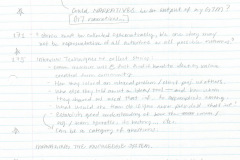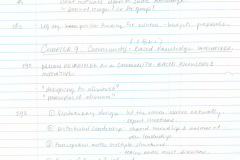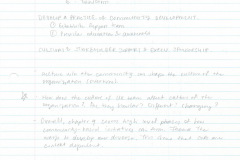
Chapter 8: Measuring and Managing Value Creation
May 2, 2020
- Begins with case study of CoPs at McKinsey and Company
- (161) Definition of CoP: “Practices are self-governing groups of practitioners who dedicate part of their discretionary time to contribute to the stewardship of their shared area of expertise”
- CoPs for UX designers will be voluntary; outside of their job descriptions
- McKinsey and Co. is an example of an organization that’s aware of the value of CoPs, and therefore invests in the development of CoPs
- Their community members are incentivized with bonuses for contributing to their communities
- CoPs in larger organizations are regulated
- Effective CoPs should not be hard to regulate:
- Less effective practices follow a vicious cycle
- Effective practices follow a virtuous cycle
The Knowledge System
- You can’t measure knowledge resources because they’re tacit and subjective—you can measure “knowledge systems through which it flows and creates value”
- So, can the UX’s knowledge system be measured? Am I trying to measure it through my research?
- Definition of knowledge system: “inchoate knowledge assets (undeveloped ideas, latent skills, isolated techniques) are made into accessible knowledge resources”
- Managing knowledge = managing the knowledge production and application processes
Measuring Value Creation
- Systematic anecdotal evidence
- Stories/narratives help describe / understand the causality between knowledge producing activities and applications that create value
- “only practitioners can tell how the knowledge was put into action” (168)
- “The best way to assess the value of community of practices, therefore, is by collecting stories”
- Documenting the narratives makes the knowledge system measurable; you can identify the input and output
- This is what I need to extract from my interviews
- Elements of the knowledge story:
- Initial knowledge development activity to innovate, learn a skill, or solve a problem
- The knowledge resource generated by this activity (ex. new insights, methods, relationships)
- How this resource was applied to create value
- What would’ve happened without the community?
- What kind of issues / challenges do you think the organization / UX design team would face without you? What kind of skill gap do you fill? What kind of challenges have you solved in the way your UX team operates?
- Narratives should be collected systematically:
- Top-down: identify communities that meet business strategy objectives
- Bottom-up: follow the communities and all of their activities
- This can be a method of data collection in GTM
- It will be interesting to apply this approach to collect narratives on KM of UX designers
- TD: What kind of UX knowledge do leaders in the organization value? What are their ideas on how UX information should be shared in the organization?
- BU: What aspects of UX information do the designers value? What are their ideals on how it should be shared?
- Can NARRATIVES become the outcome of my GT? (Instead of a conceptual model?)
- “stories must be collected systematically because one story may not be representative of all activities or all possible outcomes” (171) — this is relevant for GTM research
- Interview techniques for collecting stories
- Community members will at first find it difficult to identify value created from their community
- Ask them to describe how they solved an internal problem / client project with others
- Ask them to talk about a time when they shared an idea or taught how to use a tool, and how the person accomplished something with that new idea / skill
- What would the team do if you never provided them with an idea / information?
- Before asking any questions, establish a good background understanding of how the community, organization, and team operates (ex. history, conflicts, goals, etc.)
- These can all be overarching categories of other questions
Managing the Knowledge System
- How do your information sharing practices align to the business strategy / mission / goals? (This may be something to ask to one with leadership)
- Ways organizations support their knowledge system management:
- Community (host activities, provide space)
- Knowledge resources (develop knowledge database, provide tools)
- Business value (establish value creation goals)
- How does your organization support your “knowledge system management” (will have to reword) (ex. hosting lunch ‘n learn, database, blogs, mentorship programs, etc.)
- How does your organization recognize (UX) your achievements and contributions? — this signals what the organization values
- Recognition is not necessarily monetary. It can impact your reputation, visibility to seniors, greater publicity, etc.
- What motivates UX designers to share knowledge? Is it for personal reputation, is it to support their team members (altruism)?





